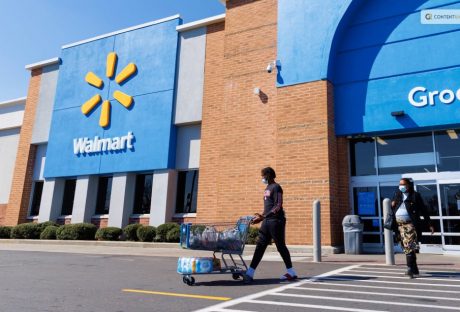You can find great things from the second smallest city in the U.S. Delaware has one of the most beautiful sceneries, from river towns and beachside havens to historic hamlets. Generally, the state has plenty to offer when it comes to bursting with charm.
Specifically, Lewes has gained popularity among retirees and job seekers for its fashion-forward boutiques, sophisticated fine dining, and affordable homes.
Lewes: What do you need to know about the city?
Lewes is a charming coastal community in Sussex County with a population of around 3,000. Lewes was the first settlement for the Dutch settlers in the 17th century and is commonly referred to as The First Town In the First State.
The town is nestled between the Great Marsh Preserve wetlands and the beautiful Cape Henlopen State Park beaches. The town’s strategic location centers around the Rehoboth and the Lewes Canal, characterized by ancient picturesque buildings.
With some ancient buildings transformed into museums, the structures elicit memories of the Dutch settlement and provide a glimpse of the town’s progress so far.
For instance, the Ryves Holt House, located at the heart of the town, is thought to be the oldest structure in the whole of Delaware. Other structures, such as the Cannonball House, show the remains of the 1812 British bombardment during the War.
The Economic Landscape
Lewes’s economic landscape is very important for future homebuyers to know. The city has been facing significant population growth over the last few years.
Population: The growth rate has been around 6.6% from the time of 2010 to 2020. This projection suggests that the growth of the economy is upward and is going up to 4.9% by the year 2020.
This growth is quite important for making the place an important and profitable place for real estate investments. It’s the factor that drives housing demand in the location (Lewes).
Real Estate Market: The current home price in this region is around $569,990, and the average price of homes is $251 per square foot. This pricing is something that reflects competition in the real estate market, appealing to investors and prospective homeowners.
It’s safe to say that the real estate market in Lewes, Delaware, is quite competitive and attractive for both homeowners and estate sellers.
Job Market: Lewes also has a robust job market that supports different industries and attracts talents from all over the country. The place employs more than 35000 people working in different job roles across industries.
However, it’s important to note that there’s a huge discrepancy in the earnings and how the job market is shaping the community. There’s a potential economic disparity that can potentially affect the local residents.
Demographic & Community Composition
Lewes’s demographic profile reveals a strong and educationally more capable community than other areas surrounding it. It has 52% residents who hold a college degree. Thanks to educational attainment, a huge range of workforce supports local businesses and industries.
However, as previously suggested, economic disparities exist among people working at different professional levels. Some of them earn a high income, while others live below the poverty line. The younger individuals are comparatively the lesser earning people in this place.
Lewes Delaware Local Businesses
There are many local businesses in Delaware. The local business scene includes lots of shops and restaurants thanks to Delaware being one of the tourist attractions. The historic district of the town also reflects rich cultural significance, attracting tourists from different places.
However, despite its cultural riches, Delaware small businesses and boutiques have to face larger retail stores and bigger businesses. There’s seasonal fluctuation in different businesses, decreasing and boosting profitability from time to time.
It’s important to consider different digital marketing tactics to improve business profitability. Targeting advertising, increasing visibility through Google My Business, and local SEO can help businesses a lot.
How has Lewes grown in recent years to become a major city?
In the 1960s, Lewes was just a home of fish processing plants but has now been dominated by opulent beach houses, boutiques, and bistros.
Besides, Lewes weather is friendly for people of all ages, with the winters being typically mild and perfect summers for a walk on one of the beaches, such as the Cape Henlopen.
Lewes is truly a town for everyone where you can explore the charming restaurants and local shops. You’ll appreciate the annual events held at the town involving locals and visitors enjoying and participating in Coast Day, the Christmas parade, the popular Antique Show, the Doo-dah parade and the First Thursdays Summer Concerts-just to name but a few.
Can I Find Homes For Sale In Lewes, Delaware?
Delaware’s booming real estate market has extended to Lewes, where beautiful homes are established facing the serene beaches. Most of the communities in Lewes occupy homes facing the Rehoboth beach for tranquility and fun.
There are plenty of affordable homes for sale in Lewes, Delaware, for you and your family, with the median home value ranging from $388,000.
This year, there has been an increase in home selling due to the rise in demand. The increased job opportunities in the numerous offices, restaurants, and shops set up in the town contributed to the demand.
The serene environment provides sufficient space for every home, leaving you with ample space to walk around.
The Bottom Line:
Moving to Lewes would be a dream come true for you whether you are avoiding noisy streets, coming to retire, or having a taste for beautiful scenery and beaches.
Lewes provides the best environment for you to settle with your family and live the life you always admired. Take time to choose the best home for you with the help of professional realtors you find around.
Choosing the best home in any place requires one to check different parameters like population, real estate market condition and gathering information about the location. If you are considering a home in Lewes, the information added in this article should help you. Thank you for reading.
Read Also:






















